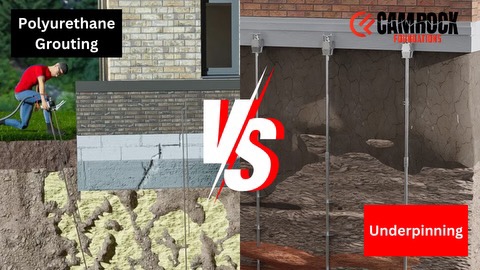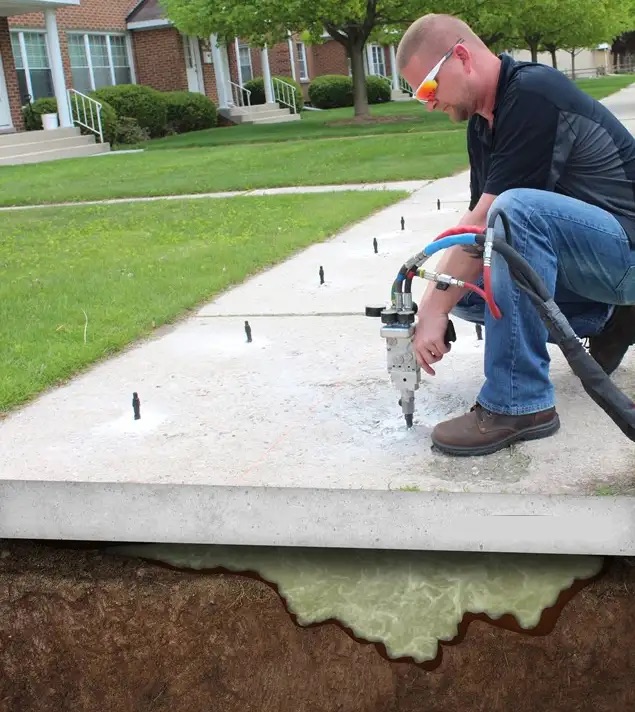
When dealing with foundation repair, homeowners and property managers are confronted with a significant decision: selecting the method that effectively stabilizes the foundation while ensuring its long-term integrity and safety. Two primary solutions stand out: polyurethane soil stabilization and underpinning, each presenting unique advantages. The decision between them relies on several factors, including the extent of foundation damage, soil characteristics, and budget considerations.

Polyurethane Soil Stabilization
Polyurethane soil stabilization involves the application of high-density polyurethane foam, injected into the ground through small drilled holes, to stabilize loose soil and elevate the foundation to its original position. This modern, minimally invasive technique is appealing for both residential and light commercial properties due to its speed and effectiveness.
Benefits:
- Rapid and Efficient: The process is quick and minimally disruptive.
- Precision: It can accurately lift and stabilize the foundation, even in confined spaces.
- Minimal Invasiveness: Smaller equipment is used, resulting in less disruption to the yard.
- Durability: Polyurethane is resistant to water, chemicals, and erosion, ensuring long-lasting stabilization.
- Cost-Effectiveness for Interior Floors: Particularly advantageous for interior floors, polyurethane provides a more economical solution compared to invasive methods. This advantage is especially significant when addressing interior slab settlement without extensive excavation or structural alterations.
Drawbacks:
- Soil Compatibility: Not suitable for all soil types, especially those with high moisture content.
- Depth Limitations: Mainly effective for surface-level foundation issues, not deeper structural concerns.
- Warranty Considerations: Warranties for polyurethane injections are typically shorter than those for underpinning methods, requiring careful consideration of long-term benefits and costs.

Underpinning
Underpinning involves extending the foundation’s depth or breadth to redistribute the building’s load to more stable soil. This method offers flexibility and can be tailored to specific project needs and soil conditions.
Benefits:
- Versatility: Effective across various soil types and foundation issues.
- Strength: Provides a permanent solution by transferring the structural load to stable soil or bedrock.
- Adaptability: Can be customized to meet specific building requirements and soil conditions.
Drawbacks:
- Cost: Generally more expensive and time-consuming than polyurethane methods.
- Disruption: Requires significant excavation, potentially affecting landscaping and property use.
- Project Duration: Completion can take weeks to months, depending on complexity and scope.
Making an Informed Choice
Choosing between polyurethane soil stabilization and underpinning necessitates a thorough analysis of the foundation issue, considering damage severity, soil conditions, and financial constraints. In certain situations, a combined approach may offer the most suitable solution for long-term stability and safety.
Seeking guidance from a professional foundation repair specialist is essential for accurately diagnosing the problem and identifying the most appropriate repair method. By selecting the right technique, property owners can safeguard their structural integrity, ensuring stability for the future.









